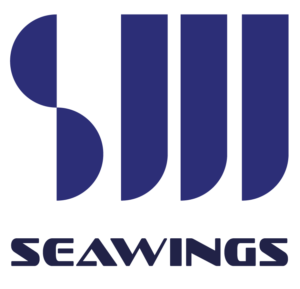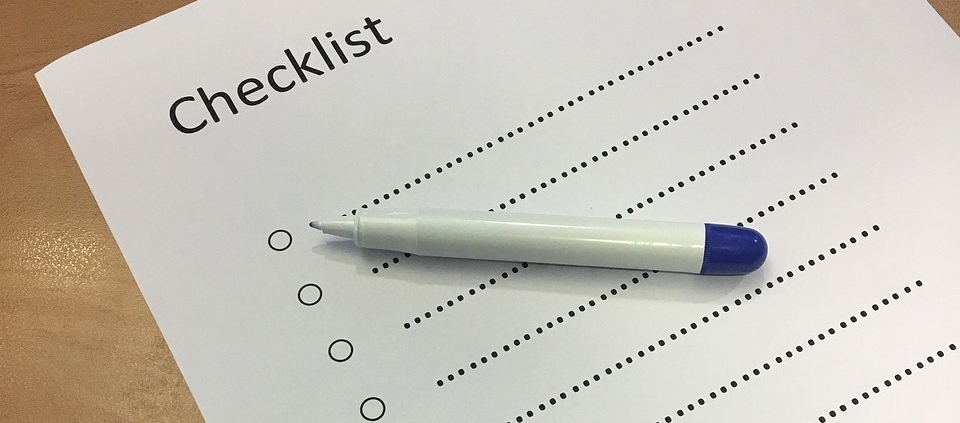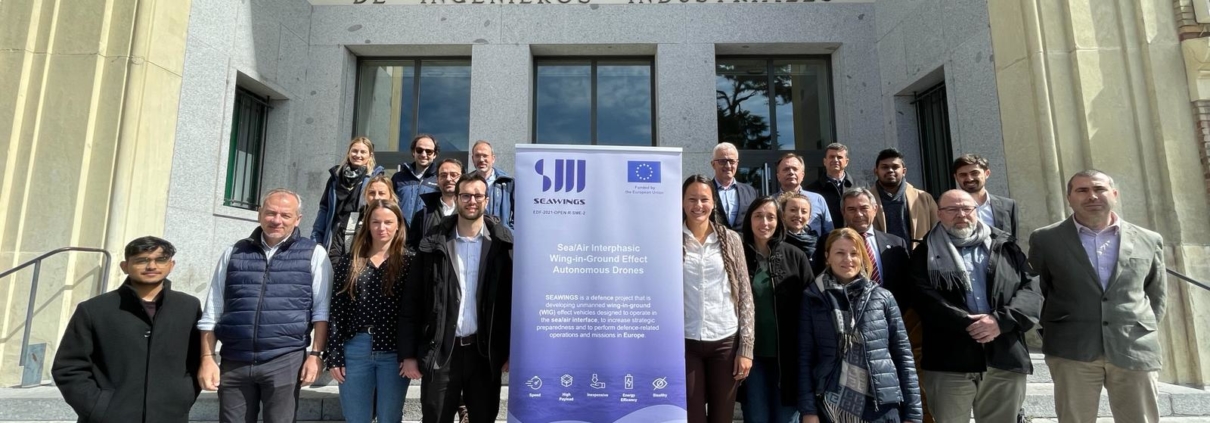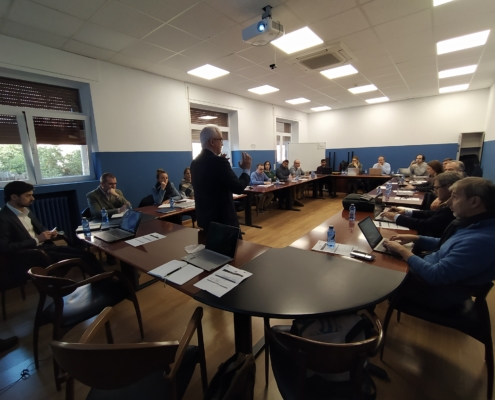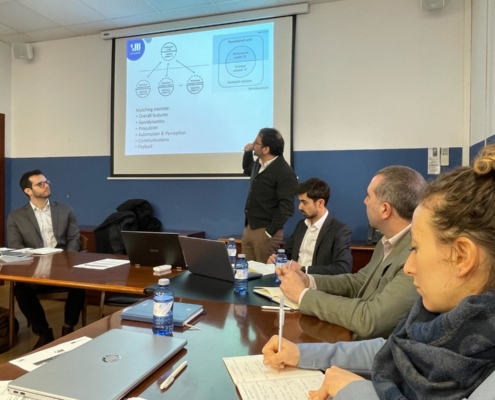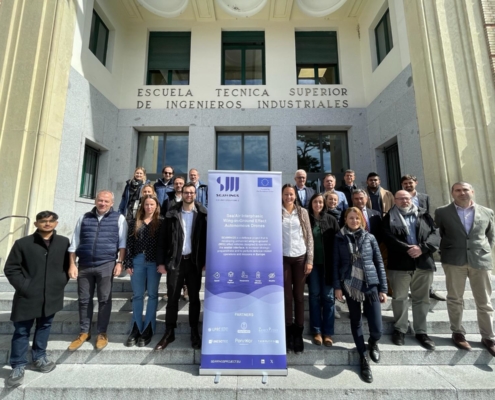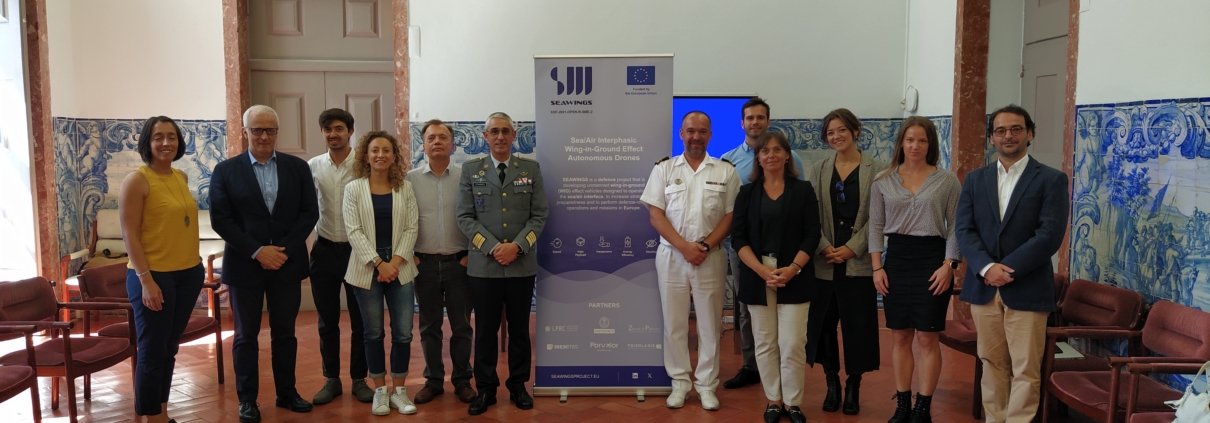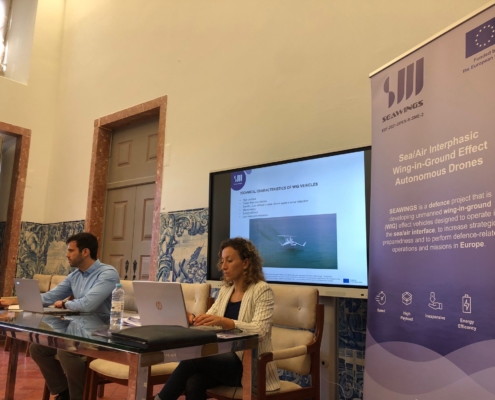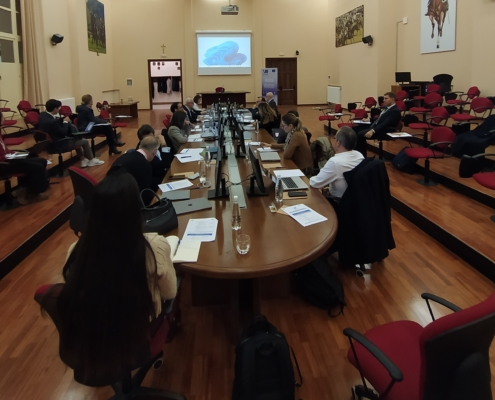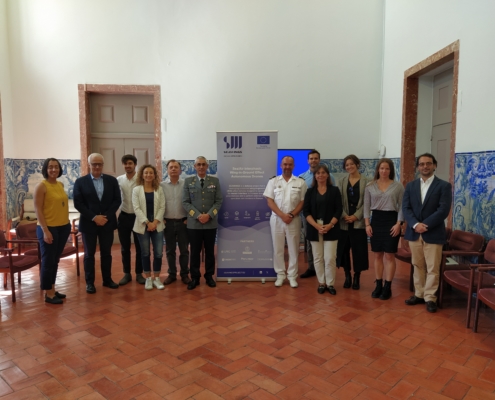Summary of activities in Year 1
During the first 12 months, the SEAWINGS project comprised several critical activities, spanning from project management, research, and technical development. The following tasks were concluded and reported in the respective deliverables:
- The risk management plan was pre-defined at the proposal stage and further discussed and supplemented during the first months of SEAWINGS implementation. Particular attention was paid to the confidential handling of results;
- An IPR management plan detailed measures to define and implement a knowledge protection strategy. It prioritised elements such as the status of IP filings, ownership considerations and licensing issues;
- The report on end-user requirements encompassed the expectations and demands of expected end-users of the SEAWINGS vehicle. This research covered diverse aspects such as case scenarios, mechanical properties, level of autonomy, and other essential functionalities;
- Findings from virtual and physical scale models were described in the “Report on Simulations and Scaled Model Field Testing”. The report focused on control aspects, offering insights into the performance of SEAWINGS model under various conditions;
- An extensive research into the regulatory landscape of the case study countries and the European Union named “Detailed Report on European Regulations and Policies for WIG Crafts”. The primary goal of the report was to identify standards, regulations, and systems that could influence the introduction of WIG crafts;
- Summarizing the research on cutting-edge perception algorithms, the “Report on Innovative Perception Methods for WIGs” underscored the importance of swift and effective perception for SEAWINGS;
- Finally, the views and feedback of the Advisory Board was reported containing external input, ideas, views, and advice in shaping the project’s direction and decision-making processes.

SEAWINGS Progress meeting in Madrid, Spain
The SEAWINGS project held a successful meeting on the 5th and 6th of March at the Centro de Automática y Robótica (UPM – CSIC) in Madrid, Spain. The meeting brought together the project partners, members of the advisory board and some end-users to discuss the progress and future directions of the project.
The first day was dedicated to the SEAWINGS Progress Meeting, which began with an overview of the agenda and objectives of the meeting. Discussions included a review of general management and coordination aspects, stakeholder requirements collection, and foundational research and conceptualization.
On the second day the focus shifted to end-user requirements which were collected through a workshop. After introductions, participants discussed performance-based design and target scenarios. The organization of this meeting mirrored that of the end-user workshops previously held in Portugal in September and in Modena in November.
SEAWINGS Progress Meeting in Modena, Italy
The SEAWINGS Consortium, along with end-users including representatives from the Portuguese Navy and the Italian Army, convened for a crucial three-day meeting at the Accademia Militare in Modena, Italy. The group focused on exploring the project’s trajectory, emphasizing user requirements and the technological specifications essential for the SEAWINGS vehicle’s success
Day One began with a welcome by Márcio Pinto of LPRC, outlining the agenda and objectives. The meeting then covered updates on project progress, including general management, coordination of actions, and a review of the Gantt chart, deliverables, milestones, communication strategies, and reporting periods. Discussions led by Paola Fratantoni (Z&P) and Nuno Almeida (Porvalor) addressed user requirements, interoperability, policies, and standards, including stakeholder requirement collection and analysis of regulations for Wing-In-Ground (WIG) crafts. Following a coffee break, the consortium explored foundational research and conceptualization, with presentations covering system conceptualization, control research, virtual models, perception sensors for autonomous WIG crafts, and power system studies.
The following day, after presenting the project comprehensively to the end-users, Z&P led a workshop reminiscent of the one held in Oerias, Portugal, in September. This session aimed to delve into the practical applications of the SEAWINGS vehicle, emphasizing its potential to significantly enhance European maritime security.
The final day focused on aligning operational requirements with technical capabilities. A technical workshop facilitated by UPM, INESC TEC, and Trisolaris, alongside the Advisory Board, delved into the technical and operational aspects crucial for the project’s success. This session emphasized the importance of synergy between technical solutions and operational demands to ensure the SEAWINGS project meets end-user needs efficiently.
